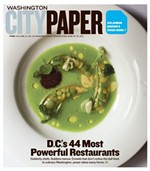Butt Seriously
For sheer lack of imagination, nothing quite holds a candle to titling a film about gay sex in the ’70s Gay Sex in the 70s. Drop in the name of an author or the title of a novel and it sounds like a paper submitted to the Modern Language Association. In the spirit of academic transparency, then, I must point out that the sex chronicled in Joseph Lovett’s documentary: (1) confines itself strictly to Manhattan; (2) actually begins in 1969, with the aftermath of the Stonewall riots; and (3) carries all the way to 1981, when the explosion of AIDS transformed the way gay men pleasure each other.
Until then, to hear Lovett’s interview subjects tell it, the sex was not just good but also epic, whether it was happening in the bushes of Central Park, in the St. Marks Baths, in the Paradise Garage, or in the backs of trucks. “You didn’t care about the danger, the smell, the raunchiness,” recalls one. “You cared about meeting someone and having sex.”
Though some of the men, who include such scenesters as Studio 54 architect Scott Bromley, erotic photographer Tom Bianchi, and playwright Larry Kramer, now insist they were searching for Mr. Right all along, it’s clear they were most in love with freedom. Or at least with the chance to live in what one commentator calls “the most liberal period the Western world has ever seen since Rome.” Looking back from today’s medically and politically circumscribed times, how could they not remain a little sentimental about their temps perdu—and a little dazed at having survived it? Carrying themselves less like Casanova than like Ishmael, they speak as men thrust mysteriously from a great wreckage. Even Kramer, the king of rant, is reduced to hushed wonder.
Kramer, of course, has already explored this era in his own work. So, for that matter, have Randy Shilts, Andrew Holleran, Edmund White, Allan Gurganus, Felice Picano, and many others, at great length and depth. Which makes Gay Sex in the 70s a largely redundant work, in addition to being a curious and unsatisfying one. Indifferently lit and repetitively structured, it’s little more than a home movie for the Fire Island crowd.
The only thing Lovett really adds to the post-Stonewall mythography is to remind us how attractive men’s bodies actually were in the ’70s, before the plague. The sleek cats on display here weren’t downing Muscle Milk or majoring in afternoon gym, but in their fantastically tight jeans, they had the sheen of true sensualists. Whatever warning we might be tempted to yell at them as they pass expires in our throats. Who are we to spoil their party with history?

